
by EM2WL | Jan 17, 2014 | Consistency, Diet Mentality, Fat Loss / Cutting, Motivation, Self Acceptance

A huge key to success is properly framing your goals.
State your goals in a positive manner rather than a negative one. So, instead of listing all the things you’re going to give up (i.e. stop eating processed food), list the things you will gain (i.e. eating more whole foods). Believe it or not, re-framing your goals in the positive can help to remove mental blocks and get you closer to your goal. After all, no one wants to be restricted from doing something.
In our last post in the goal setting series, Trish talked about setting behavior-based versus outcome-based goals. To recap, setting behavior-based goals are specific, measurable actions that you can take to accommodate the results you desire. For example, instead of saying, “I want to lose 5 pounds this month,” you might say, “I will log my food to make sure I nail my macros.”
Today let’s talk about how you frame your goals. It may seem like a silly technicality, but whether we approach our goals in a negative or positive light will make a huge difference in how we approach this journey.
If you begin your journey with a list of things you must not do or must not eat, your fitness life can seem like a very negative and punishing place, full of restrictions. Who wants to live like that? The more that you tell yourself you can’t (or must not, under any circumstances, WHATSOEVER!!!!!!) have something, the more you tend to want it. It is simply human nature to want that which is forbidden.
 Think about it. If you’ve ever dieted, you can probably relate to this scenario. You determine you are going to cut out every bit of added sugar to your diet. What happens the first time you have a little slip-up and allow yourself a piece of candy? Are you able to stop at just one, or are you compelled to finish the whole bag to get that pesky craving “out of your system?”
Think about it. If you’ve ever dieted, you can probably relate to this scenario. You determine you are going to cut out every bit of added sugar to your diet. What happens the first time you have a little slip-up and allow yourself a piece of candy? Are you able to stop at just one, or are you compelled to finish the whole bag to get that pesky craving “out of your system?”
Instead of thinking about the behaviors that you need to stop, or do less of, what behaviors do you need to begin or do more of to accomplish your goals?
Increasing the frequency of healthy, goal-oriented behaviors will automatically crowd out the unhealthy, goal-sabotaging behaviors.
For example, instead of telling yourself that you need to eat less junk food, perhaps you could challenge yourself to try out some healthy alternatives to your family’s favorite fast food meals. Think about challenging yourself to incorporate one new healthy habit each month until they become second nature.
Even if your body is adequately nourished with a proper number of calories, impeccable macros, and sufficiently hydrated, you may feel mentally restricted if you are still telling yourself there are foods you cannot eat. Make sure that you plan to incorporate some of your favorite treats along the way as you progress towards your goals. Unless you have an actual physical intolerance to a certain food, there is no reason why most foods cannot be part of your healthy eating plan, regardless if your goal is to lose fat, gain muscle, or work on body recomposition.
This approach can be applied to your fitness goals as well. Instead of thinking, “I need to tighten up these flabby thighs,” focus on the changes you need to make to see the results you crave. Instead, you might focus on adding 25 pounds to your squat or improving your 5k time.  Focusing on becoming a stronger individual in the gym will most likely lead to positive changes in your body. However, prioritizing strength and athleticism over physical appearance puts the control in your hands, and you will get to experience the empowerment and satisfaction of setting new PRs and watching yourself become stronger each day!
Focusing on becoming a stronger individual in the gym will most likely lead to positive changes in your body. However, prioritizing strength and athleticism over physical appearance puts the control in your hands, and you will get to experience the empowerment and satisfaction of setting new PRs and watching yourself become stronger each day!
Enjoy the road ahead! Be kind to yourself as you work towards your 2014 goals. This journey is challenging enough without adding negativity and self-hate.
Keep your eyes fixed on your goals, and enjoy every moment and the lessons you will learn along the way. Here’s to your best year yet!
Photo credit: jscreationz, ambro, David Costillo Dominci, annankkml of freedigitalimages.net
Becca is a busy wife and homeschooling mother to five children ages 5 to 13. About three years ago, she embarked on a journey to health and fitness that resulted in the loss of approximately 100 pounds. Today, she is a competitive powerlifter and strongwoman who loves ice cream and deadlifts. As an ISSA certified personal trainer, she is passionate about helping women to get started on a lifestyle of strength and fitness.

by Trish Adams | Jan 13, 2014 | Motivation
Hopefully your journey is off to an amazing start and you’ve laid out your goals for the next 90 days to a year, and have broken them down into smaller goals that you have a high level of confidence you can achieve. If perchance you haven’t laid out your goals, fear not, it’s never too late to get started. If you have started, well it never hurts to have a recap.
“Setting goals is the first step in turning the invisible into the visible.” -Tony Robbins
In our best year yet post we laid out a game plan for goal setting, separating goals into outcome goals, which are broader and not always under our direct control, and behavioral goals, which are under our direct control and will be the steps you take to achieve your outcome goal. Identifying behavioral goals simply requires a little Q&A session with yourself where you identify the tasks required to obtain a result. By the end of this exercise, you should walk away with the steps needed to achieve your outcome goal.
Once you have both your outcome goals and behavioral goals defined, examine them a bit closer. How specific are they? Can you answer what, where, when and why for the goal? Saying that you will exercise 3 times a week is somewhat specific, but can you be even more specific? For example, specify the days of the week and time that you’ll exercise. Maybe even the type and length of the exercise, so you know when you hit the mark. The more specific you can be with your goals the more clarity, direction and focus you will have. Having goals which are vague leaves room for misinterpretation and difficulty measuring success.
 Next up, make sure that your goals are measurable. This one should be pretty obvious why it’s important. After all, if your goals aren’t measurable, how will you know how you’re progressing? Being able to measure progress will also help you determine if any tweaking or adjustments are needed.
Next up, make sure that your goals are measurable. This one should be pretty obvious why it’s important. After all, if your goals aren’t measurable, how will you know how you’re progressing? Being able to measure progress will also help you determine if any tweaking or adjustments are needed.
Consider whether the goals you have set forth are realistic. That is, are they achievable. Many times we set goals based on a best-case scenario where all things go according to plan. We don’t account for the many unexpected events that occur in our lives. Furthermore, if you’re proposing activity that is new to you, make sure you factor in time for you to get acclimated, pace yourself.
Setting a timeline helps keep you on track and ensures the behaviors you set forth are appropriate for the goal. Losing 5% body fat whenever would require a drastically different set of steps than if you were to set a timeline of 3 months. Goals that are left open-ended tend to get put off until it is convenient. Having a deadline will help keep you motivated and on track. See why it’s important? Good.

Lastly, be sure to write your goals down and refer to them often, even daily. This will help you stay focused, committed and will serve as a reminder of what you want to achieve.
While the outcome goal is important, focus your daily efforts on your behavior goals. These are the steps that will achieve your outcome goals. Stay consistent with these steps and you will be on your way to success!
If you haven’t already, join our protein challenge and check in with us on Facebook, Twitter, and Instagram!

by | Jan 6, 2014 | Consistency, Fat Loss / Cutting, Motivation, Nutrition, Self Acceptance
Challenge:
Now that you have your list of fitness goals, look deeper into the reasons why you want to achieve them. What is really driving you to make this change? Maybe you want to set a better example for your kids or something similar. Willpower is an exhaustible resource and having that emotional tie in to your goal will help pull you through the tough times. Referring to this list regularly will help reinforce your commitment.
By now, you should have a clear-cut idea of the goals that you want to accomplish for this year. Hopefully you have a list of some outcome-based goals that you intend to work towards in accomplishing your main goals. And you’ve framed those goals in such a way that you are working on building positive habits, rather than eliminating negative ones.
Now it’s time to get personal and dig deep into the reasons for your motivation. Why is it important for you to reach your goal? There are a number of reasons why you might set fitness goals. Maybe you want to set a better example for the little ones who are watching your every move, do away with high blood pressure, or feel more confident when you wear that bikini for your upcoming beach vacation.

As you think about the factors that are motivating you, remember that ultimately YOU are your best motivator and it is YOU who needs to own this journey. You need to determine what will motivate you to keep going when your willpower runs out. Others may be able to encourage you, but it is YOU who must make the hard choices and remain consistent when you feel like giving up.
Remember to continue to cast your goals in a positive, not negative light. If you begin your goal setting process from the place of feeling disgusted with the way you look, it is highly likely that you will approach developing healthy habits as “punishment.” This is the wrong way to approach lasting lifestyle changes! If you view fitness and nutrition as punishment, you are far less likely to remain consistent. Change your mindset! Remaining consistent in the behaviors that will help you succeed in reaching your goals is an incredibly rewarding, not punishing experience.
 There is nothing wrong with wanting to be proud of the way that you look. However, placing too much emphasis on attaining a certain look can drain the joy out of life. Try to keep the focus of your goals on performance and outcomes. This can be incredibly difficult for us, particularly as women living in a culture that places so much emphasis on how we look. It is easy for us to become obsessive about the way we look, and often the truly important things in our lives suffer as a result. Self-loathing, body shaming, anxiety, depression, and perfectionism often are present in those who are overly concerned with their physical appearance. Unable to attain to this impossible standard of perfection, it is easy to temporarily stop caring, which unfortunately leads to more self-loathing, and the cycle continues.
There is nothing wrong with wanting to be proud of the way that you look. However, placing too much emphasis on attaining a certain look can drain the joy out of life. Try to keep the focus of your goals on performance and outcomes. This can be incredibly difficult for us, particularly as women living in a culture that places so much emphasis on how we look. It is easy for us to become obsessive about the way we look, and often the truly important things in our lives suffer as a result. Self-loathing, body shaming, anxiety, depression, and perfectionism often are present in those who are overly concerned with their physical appearance. Unable to attain to this impossible standard of perfection, it is easy to temporarily stop caring, which unfortunately leads to more self-loathing, and the cycle continues.
Regardless of where you are right now in your journey, be proud of who you are and do not subject yourself to body shaming as a way to motivate yourself. Don’t wait until you’ve accomplished your goals to feel great. Make sure you have plenty of options to look and feel your best, right now!
You may want to answer some questions in your fitness journal to help you think about the reasons for your goals. Jotting down a a few thoughts will give you something to refer back to and remind you of why this is important when you feel your willpower diminishing.

- What goals do you have?
- Why is it important for you to accomplish these goals?
- What drives you?
- What makes you feel happy?
- How will you feel when you reach your goals?
Images courtesy of: stockimages, Stuart Miles, Maya Picture of freedigitalimages.net
 Becca is a busy wife and homeschooling mother to five children ages 5 to 13. About three years ago, she embarked on a journey to health and fitness that resulted in the loss of approximately 100 pounds. Today, she is a competitive powerlifter and strongwoman who loves ice cream and deadlifts. As an ISSA certified personal trainer, she is passionate about helping women to get started on a lifestyle of strength and fitness.
Becca is a busy wife and homeschooling mother to five children ages 5 to 13. About three years ago, she embarked on a journey to health and fitness that resulted in the loss of approximately 100 pounds. Today, she is a competitive powerlifter and strongwoman who loves ice cream and deadlifts. As an ISSA certified personal trainer, she is passionate about helping women to get started on a lifestyle of strength and fitness.

by | Dec 28, 2013 | Consistency, Motivation, Nutrition, Team EM2WL
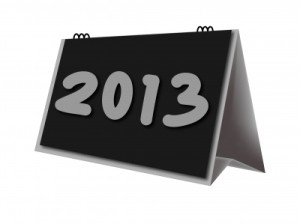
As this year draws to a close, its a great time to reflect upon the goals that you had set for the previous year. Take a few minutes to reflect and answer some questions. If you don’t already, now would be a great time for a fitness challenge. Begin a fitness journal where you can keep a written record of your goals, plan your meals, and log your workouts. This can either be done with an actual notebook, or if you find it more convenient, you can take advantage of a number of smart phone apps for this purpose.
Here are some questions to get you started:
- What did I do well this year?
- What could I improve upon?
- Are there obstacles to reaching my goals that I need to address?
- What could I do to work around these obstacles?
- What habits do I need to develop if I wish to accomplish my goals?
 As you reflect upon your past year, there may be some areas where you realize that you came up short. Don’t beat yourself up! None of us are perfectly consistent all the time! Leave the past in the past and commit to always moving forward. As you approach your new year, it may be time to set some new goals.
As you reflect upon your past year, there may be some areas where you realize that you came up short. Don’t beat yourself up! None of us are perfectly consistent all the time! Leave the past in the past and commit to always moving forward. As you approach your new year, it may be time to set some new goals.
Here at EM2WL, we are committed to helping you make 2014 your very best year yet! Be warned: the media will capitalize upon this time and try to entice you into the latest diet and fitness craze. We know diets are not the answer! Committing to making small, sustainable changes and remaining consistent is the best way to see the lasting results you desire.
Over the year, our team will be putting together a number of monthly challenges to help you stay on track. Because EM2WL is all about the big picture, these challenges will address a number of areas: strength training, cardio, motivation, goal-setting, self-love/body acceptance, and nutrition. They are broken into small, daily tasks that you will find easy to fit into your day. These small challenges will make a big difference in your journey, and help you to make this a lifestyle! We are excited to kick off our January fitness challenge in just a few days and can’t wait for you to join us!
Will YOU take the challenge?
Be sure to check in on our Facebook, Twitter, and Instagram as we work through these challenges together!
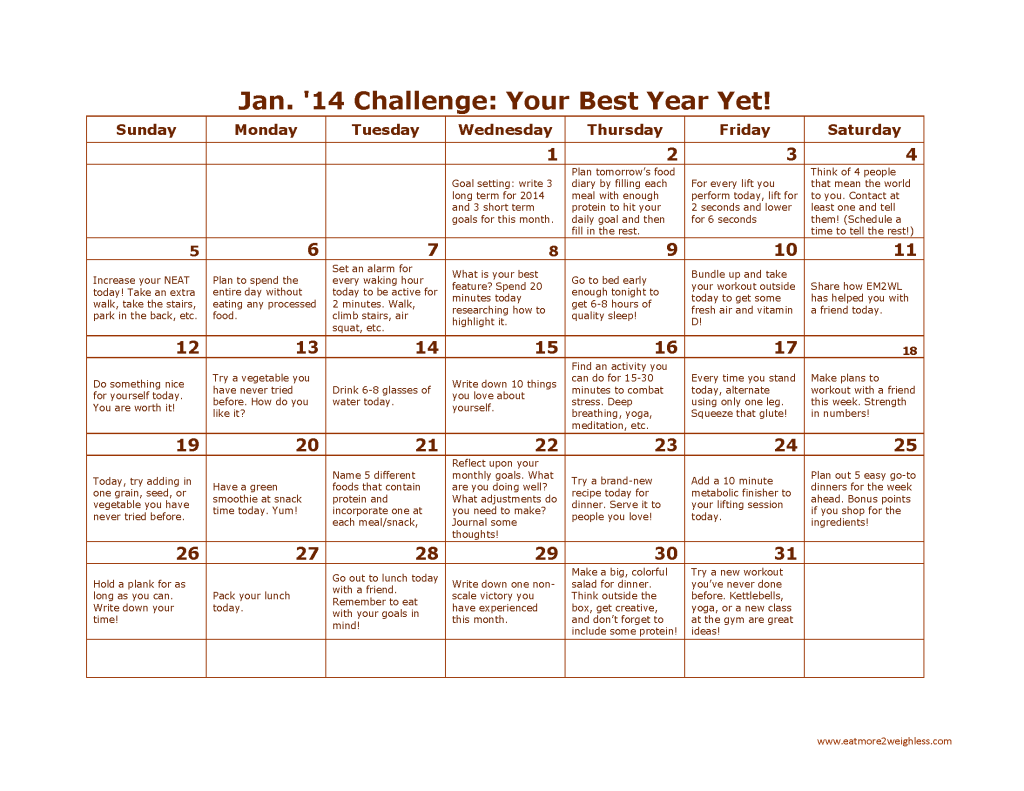
Click to Enlarge
Image courtesy of: khuruzero of freedigitalphotos.net

by Trish Adams | Dec 26, 2013 | Motivation
 The new year is fast approaching and, as tradition has it, you may be contemplating making a few New Year’s Resolutions. January 1st often comes with high hopes of starting anew, but may also be mixed with some anxiety, especially if you haven’t had much success with resolutions in the past. For many of us, we make resolutions, year after year, which more often than not, fade into wish lists. We start off with the best of intentions, but at some point things go off course and we never quite recover. This year, rather than making a lofty list of goals, why not try a different approach. One that splits your resolutions into mini goals that you feel highly confident that you can achieve.
The new year is fast approaching and, as tradition has it, you may be contemplating making a few New Year’s Resolutions. January 1st often comes with high hopes of starting anew, but may also be mixed with some anxiety, especially if you haven’t had much success with resolutions in the past. For many of us, we make resolutions, year after year, which more often than not, fade into wish lists. We start off with the best of intentions, but at some point things go off course and we never quite recover. This year, rather than making a lofty list of goals, why not try a different approach. One that splits your resolutions into mini goals that you feel highly confident that you can achieve.
Identifying goals, changes…whatever you call them
When it comes to your list of goals, separate them into two categories: outcome-based vs behavioral-based goals. With outcome goals you don’t have direct control over the outcome. Losing 10 pounds of fat in 10 weeks is an example of an outcome goal. An example of a behavioral goal, of which you do have direct control, is including protein at each meal. Behavioral goals should be constructed in such a way as to move you closer to your outcome goal. Both outcome and behavioral goals should be practical, specific and measurable. So saying that you want to ‘get healthy’ in the new year won’t quite cut it.
 Framing your goals
Framing your goals
State your goals in a positive manner rather than a negative one. Instead of listing all the things you’re going to give up (i.e. stop eating processed food), list the things you will gain/do MORE of (i.e. eating more whole foods, fiber, protein, etc.). Believe it or not, re-framing your goals in the positive can help to remove mental blocks and get you closer to your goal. After all, no one wants to be restricted from doing something.
Get emotional
Now that you have your list of goals, look deeper into the reasons why you want to achieve them. What is really driving you to make this change? Maybe you want to set a better example for your kids or something similar. Whatever your reasons are, identify them then write them down. Willpower is an exhaustible resource and having that emotional tie in to your goal will help pull you through the tough times. Referring to this list regularly will also help reinforce your commitment.
Get ‘er done
Be practical with what you can commit to. If you don’t currently exercise, consider if it is realistic to set a goal of exercising 6 days a week right out the gate. Break bigger goals down, so that if you were asked, ‘On a scale of 1 to 10, how confident are you that you can make this change?’ , your response is a 9 or 10. If your response is a 5 or 6, break that goal down further until you can respond with a strong 9 or 10. Don’t set yourself up for failure even before you begin. Start with 1-2 goals that you feel strongly that you can achieve. After successfully maintaining this activity for 2-4 weeks move on to the next one….and the next, and so on.
 Going off track
Going off track
I can’t stress this enough. Whether it’s missing a scheduled workout or over indulging at a dinner out with friends, let it go. Life is unpredictable. Things happen. Don’t sweat it. Progress is not about perfection. You will still progress toward your goal without adhering to some rigid plan. Just get back on track and ditch the guilt.
Last, but most important
There’s one other area that can seriously derail your resolution efforts and that is your mind. However, you define yourself is who you will ultimately be. If you define yourself as an athlete, you will believe that you are an athlete. Likewise, if you define yourself as a failure, you will believe that you are a failure. Just believing that you are capable immediately raises the glass ceiling that many of us set for ourselves. Practice positive self talk and self love regularly.
There it is. It won’t always be smooth sailing, but tip the board as much as possible in your favor from the beginning and you will be off to great start.
Image courtesy of: FreeDigitalPhotos.net
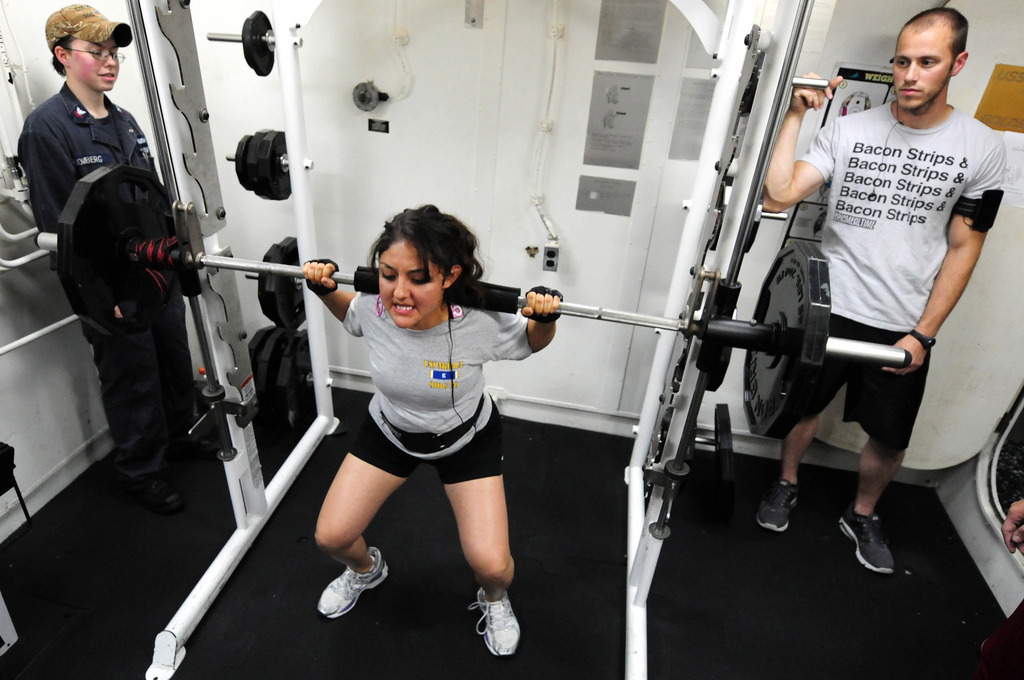
by EM2WL | Dec 18, 2013 | Consistency, Motivation, Q & A

Everyone should be lifting by now. Are you?
Unless you’re fairly new to the EM2WL lifestyle (or the fitness world, in general), you’ve no doubt begun incorporating some weight training into your workout regimen for optimal results. Even newbie fitness buffs are bombarded with strong “recommendations” of weight training everywhere they turn, and typically know that they “should” be lifting (even if they still choose not to). The longer you lift, the more intensity you need — this is where intensity techniques come into play.
In the beginning, simply getting through your workouts and sticking to the basics (compound movements in pre-set rep ranges) are more than enough to stimulate changes in your physique. But at a certain point it becomes very difficult to get more out of your workouts.
What gives?
Well…the more advanced you become, the more intensity techniques your training style will need in order to produce results.
What is Intensity?
Intensity — by definition — is an extreme degree of strength, force, energy, concentration, vigor, fury, passion, etc., done through activity, thought, or feeling. It’s basically not just what you do in the work out, but how you do it, and what energy you bring to it.
Working out at the wrong intensity level for you will typically:
⦁ cause burnout or injury (if your intensity level is too high for your fitness level)
⦁ bring your progress to a screeching halt (if your intensity level is too low)
Beginner vs Advanced Intensity

There’s a huge difference in the intensity level from beginner to advanced…let’s not forget that there’s an intermediate level between the two! And there’s even a difference in intensity of advanced lifters compared to that of competitors who are training for the stage. There’s absolutely no reason for a beginner to hop right into to an advanced lifter or professional competitor’s routine. That body took them years to develop, and it will take a beginner just as long (possibly longer) to do the same. Going all out up front simply leaves you with less tricks of the trade as you progress. This is no different from our basic premise on eating too little or doing too much cardio. Doing too much, too soon is almost always a recipe for disaster.
On the flip side, if you’ve been lifting for a year or more, and are still approaching your workouts halfheartedly, or doing the exact same moves, with the exact same weights, it’s time to step it up. If you want results, then make sure your head is in it. You’re not doing anyone any favors by simply lifting because it’s on your to-do list, or because Kiki said so. Be ALL in. Pop in those earbuds or that DVD and put it on blast. Get in your “zone.” Increase your poundage, eek out an extra rep/set, lower the weights slower than usual, or lift them more powerful and explosive than usual. If you’ve been doing full body workouts three times per week, try upper/lower splits 4 days per week or concentrate (ie more sets/reps) on one or two body parts, each day for five days. When it’s time to work, put in WORK. Yet, be sure to also rest when it’s time to rest; under-recovery can also lead to a lack of energy/drive/focus and, subsequently, results.
“The harder you work, the more results you will see, assuming that your training methods are as effective as possible. ” ~Arnold Schwarzenegger
So let’s say that you’re well beyond your beginner years. When you’re in the gym, you’re in.the.gym. You’re working as heavy as you can, doing as many sets as possible, and training as often as possible without overdoing it. What worked in the beginning years, simply doesn’t work anymore, no matter how “into” it you are.
The Longer You Lift, the More Intensity you Need
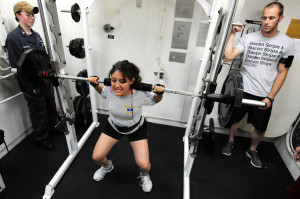 This is where intensity techniques come into play. Playing with rest times, supersets, burn sets, drop sets, giant sets, forced reps, partial reps, rest/pause, German Volume Training, etc., will prove invaluable in your advanced years. (We will go into detail on this at a later date, but several of these techniques have been included many of our workout plans).
This is where intensity techniques come into play. Playing with rest times, supersets, burn sets, drop sets, giant sets, forced reps, partial reps, rest/pause, German Volume Training, etc., will prove invaluable in your advanced years. (We will go into detail on this at a later date, but several of these techniques have been included many of our workout plans).
This is another reason why it’s not a great idea to totally abuse these techniques before their time. This tends to be quite common in newer lifters who were used to cardio-only workouts. They start out of the gate adding intensity techniques because they don’t feel like the slower pace of traditional lifting will “work.” In actuality, they should be taking FULL advantage of the newbie gain period, that produces results from hardly any effort. If that sounds like you, beware that you are setting yourself up for a harder road, than if you simply allow for natural intensity progression to take place. Two to three days per week of compound lifts are plenty for starters. Be assured, it IS working. Remember that there is a law of diminishing returns on ALL types of workouts. Just as with endurance workouts, the more advanced you become, the harder it is to continue to develop, and the harder you have to train.
Speaking of endurance…
Endurance limitations Affect Performance and Intensity
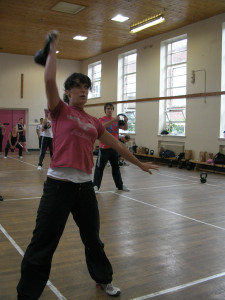
Increased endurance of the muscle will help you to push more weight
Without enough muscular endurance, it will become harder to get through your workouts with the same intensity. You’ll begin to feel as if you’ve hit a wall with your training: your lifts will stall out all together, or even begin to go down. This is due to the fact that endurance-style training (with weights or without) supply much needed oxygen to the muscles. If you use up your body’s ability to supply oxygen to the muscles (by never working in an endurance rep range), they will fail prematurely and you will not fully stimulate them. This can easily be remedied by taking a 4-6 week break and de-loading (reducing your weight, and increasing the reps) every 2-3 months or whenever you feel that you are entering that stall pattern. Going through a gradual endurance period (higher reps with very little rest between sets) will give your body time to adapt, and your ability to train hard, for longer periods of time will increase. You will tire more quickly, and likely feel like a punk, lol, but it’s short lived and for the greater good. So stick it out.
Along with tracking your progress via methods of tape measure, body fat percentage, and pics, be sure to examine your level of intensity. Ask yourself each time you hit the iron if your current intensity is where it should be. Do your best to bring the greatest intensity (focus, vigor, passion, energy) needed for your fitness level to each and every workout, you will continue to see changes for years to come.
Sick of trying to figure it all out on your own? Proper periodization is KEY to outsmarting your plateaus, but sometimes you need to dedicate your brainpower to more important things. I get it – so allow me to do the work for you. The EM2WL Level Up app is fully equipped with just the right amount of endurance, hypertrophy, strength, and metabolic phases (with instructions for exactly when to crank up or cut back the intensity techniques). Click here for more info.
References:
Dictionary.com
Mirriam-Webster.com
The New Encyclopedia of Modern Bodybuilding, Arnold Schwarzenegger
Photo creds: Stephanie Young, kl.fitness, US Navy, Cherry Point

 Think about it. If you’ve ever dieted, you can probably relate to this scenario. You determine you are going to cut out every bit of added sugar to your diet. What happens the first time you have a little slip-up and allow yourself a piece of candy? Are you able to stop at just one, or are you compelled to finish the whole bag to get that pesky craving “out of your system?”
Think about it. If you’ve ever dieted, you can probably relate to this scenario. You determine you are going to cut out every bit of added sugar to your diet. What happens the first time you have a little slip-up and allow yourself a piece of candy? Are you able to stop at just one, or are you compelled to finish the whole bag to get that pesky craving “out of your system?” Focusing on becoming a stronger individual in the gym will most likely lead to positive changes in your body. However, prioritizing strength and athleticism over physical appearance puts the control in your hands, and you will get to experience the empowerment and satisfaction of setting new PRs and watching yourself become stronger each day!
Focusing on becoming a stronger individual in the gym will most likely lead to positive changes in your body. However, prioritizing strength and athleticism over physical appearance puts the control in your hands, and you will get to experience the empowerment and satisfaction of setting new PRs and watching yourself become stronger each day!















 The new year is fast approaching and, as tradition has it, you may be contemplating making a few New Year’s Resolutions. January 1st often comes with high hopes of starting anew, but may also be mixed with some anxiety, especially if you haven’t had much success with resolutions in the past. For many of us, we make resolutions, year after year, which more often than not, fade into wish lists. We start off with the best of intentions, but at some point things go off course and we never quite recover. This year, rather than making a lofty list of goals, why not try a different approach. One that splits your resolutions into mini goals that you feel highly confident that you can achieve.
The new year is fast approaching and, as tradition has it, you may be contemplating making a few New Year’s Resolutions. January 1st often comes with high hopes of starting anew, but may also be mixed with some anxiety, especially if you haven’t had much success with resolutions in the past. For many of us, we make resolutions, year after year, which more often than not, fade into wish lists. We start off with the best of intentions, but at some point things go off course and we never quite recover. This year, rather than making a lofty list of goals, why not try a different approach. One that splits your resolutions into mini goals that you feel highly confident that you can achieve. Framing your goals
Framing your goals





Recent Comments